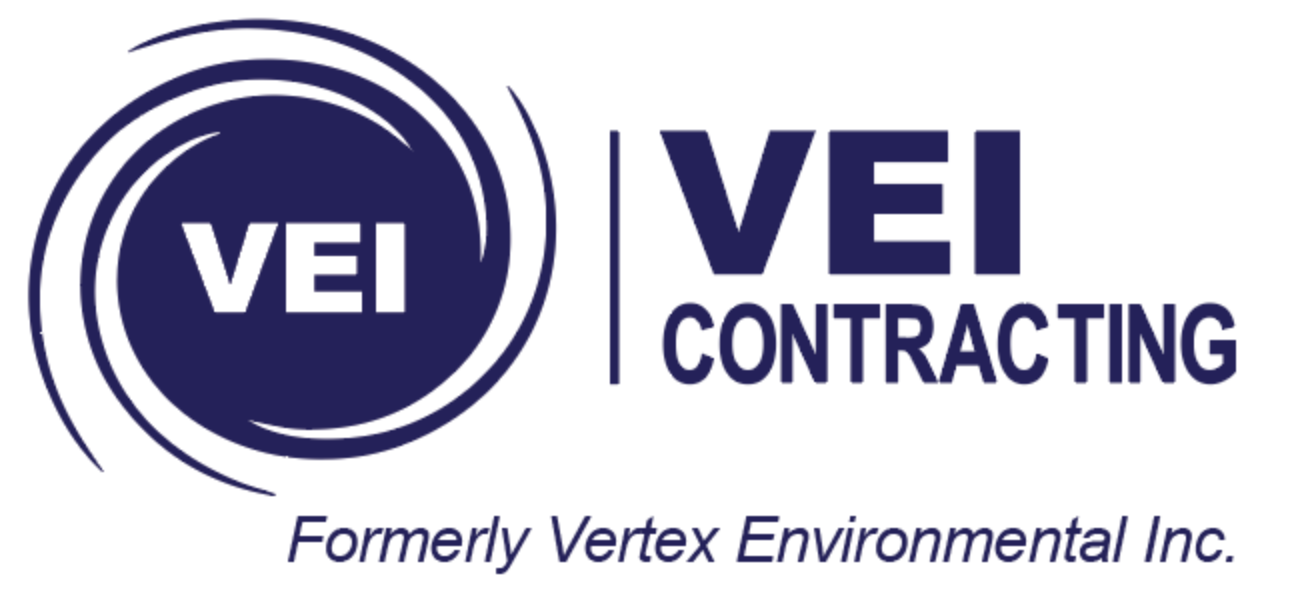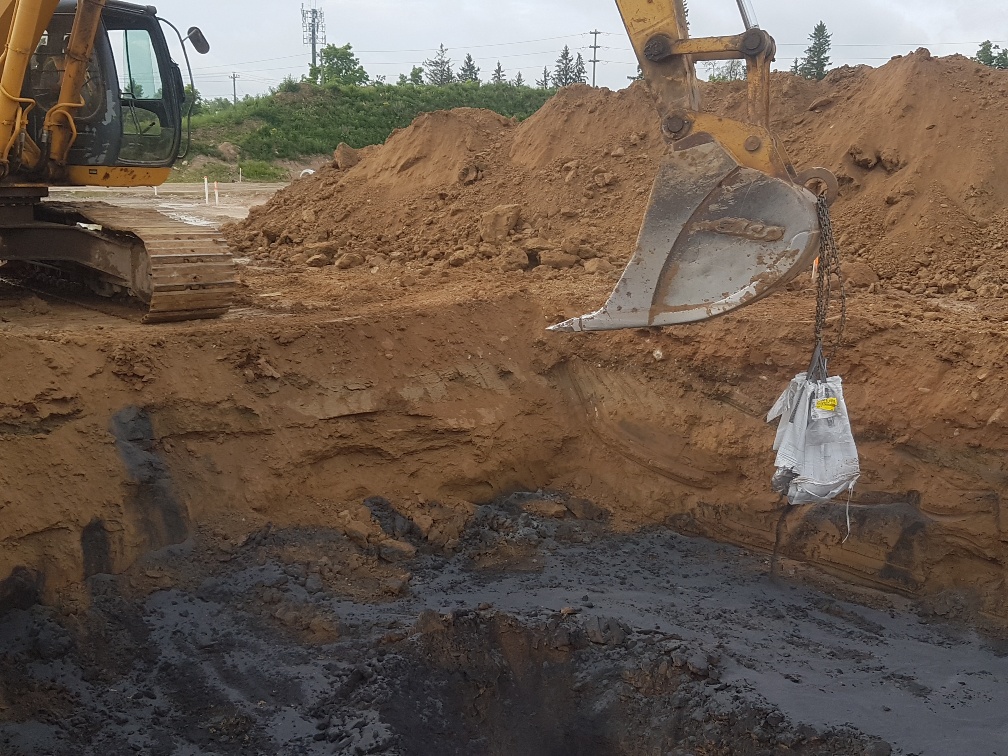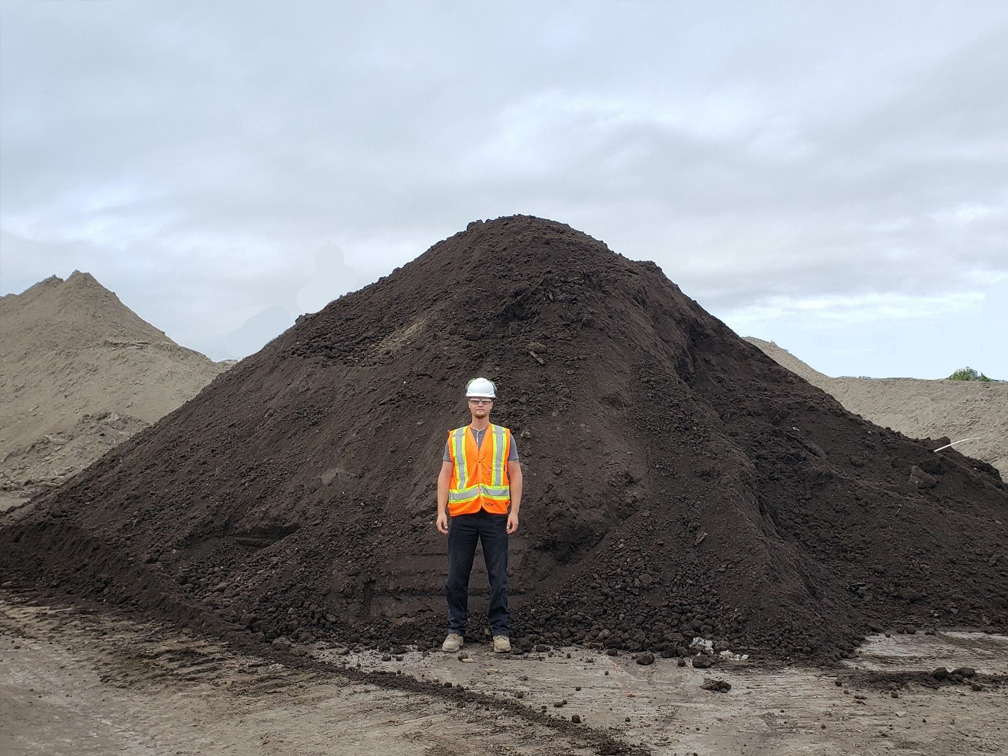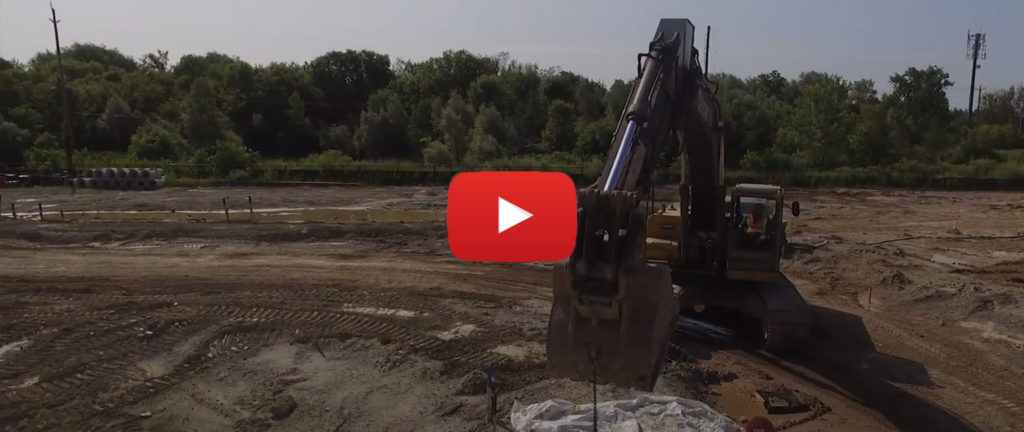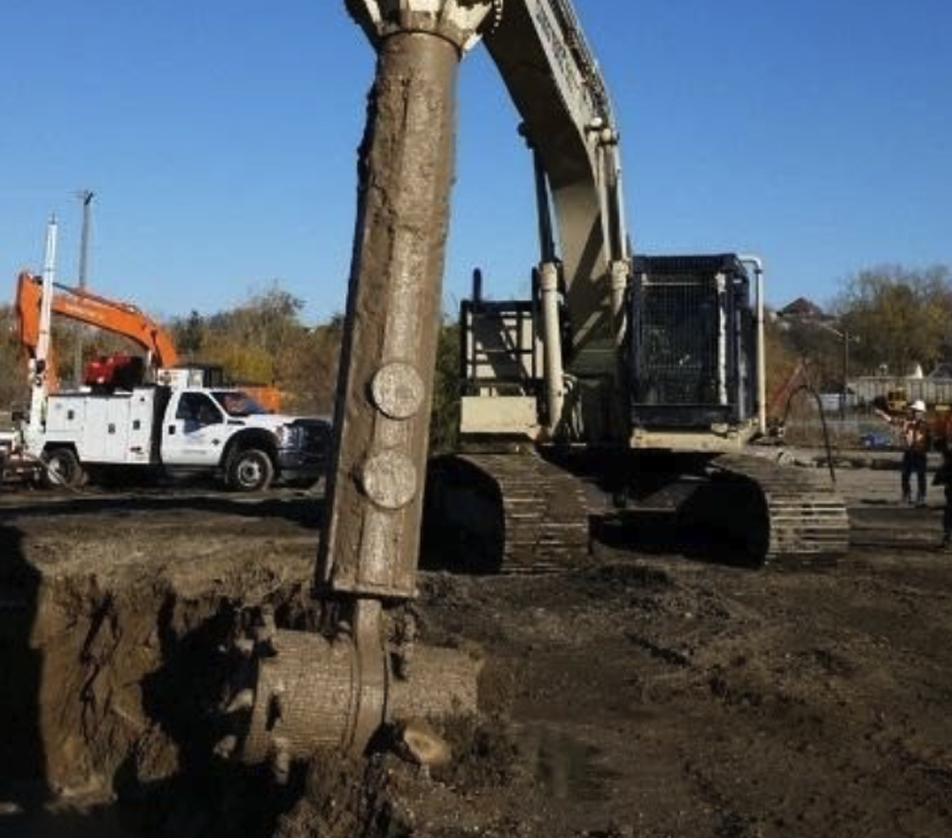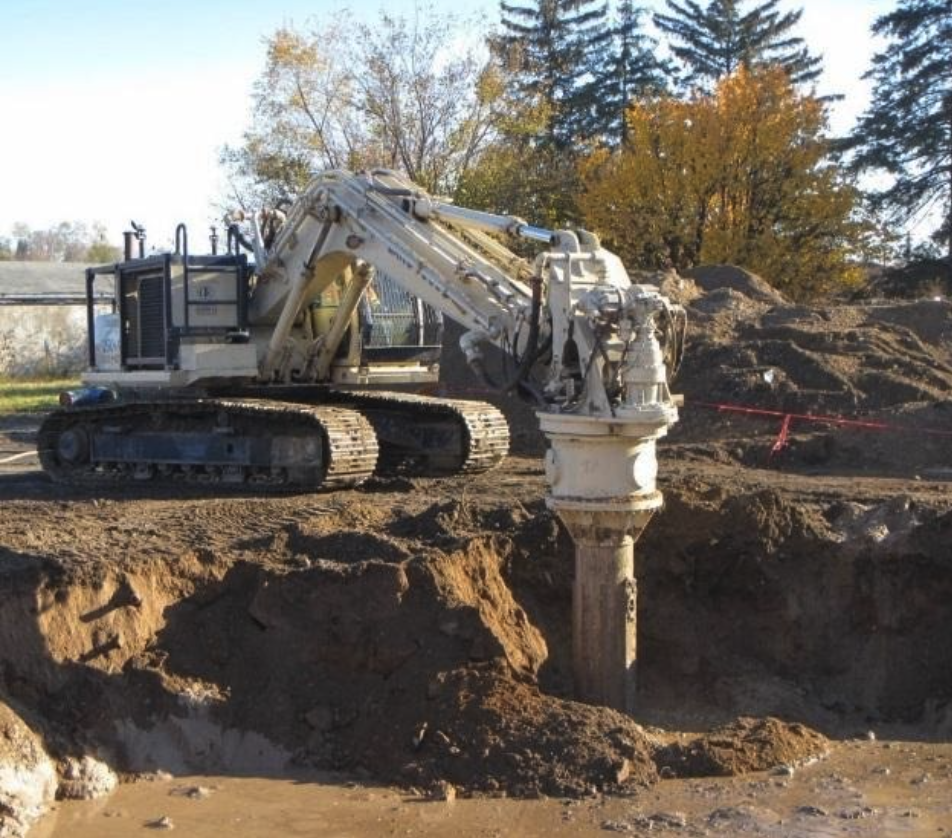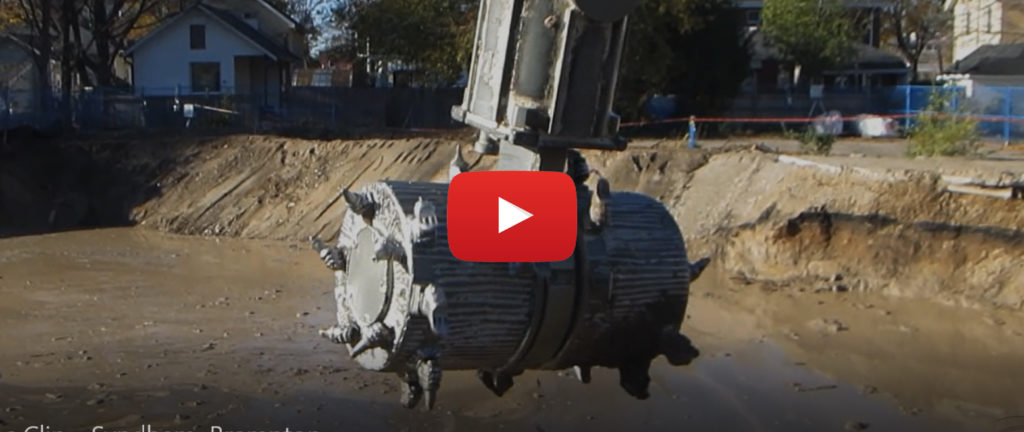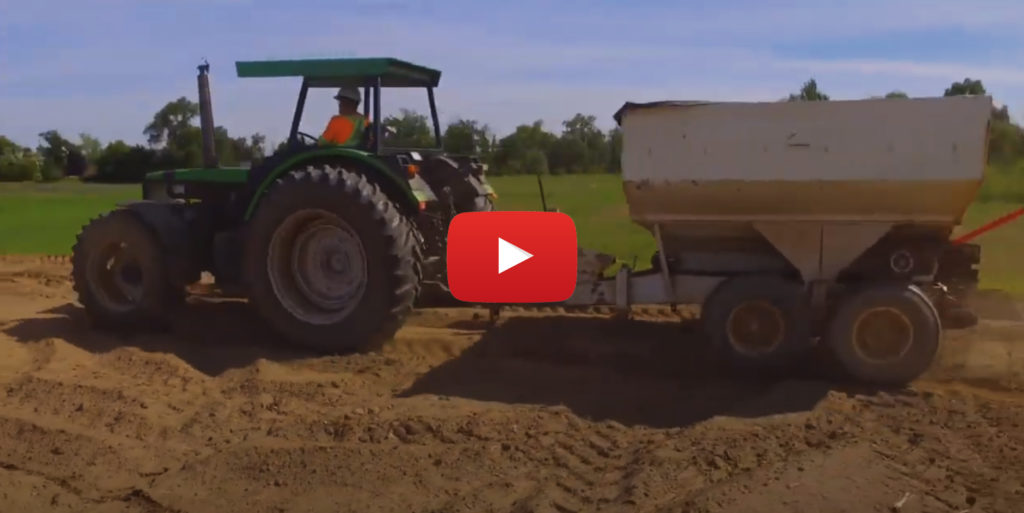Contaminated Soil as Backfill? Save Money, Be Sustainable!
Here is a situation: soil on your property is contaminated. Off-site disposal is too expensive, especially when you include the cost of trucking and backfill. Is there a better way than landfilling? Yes!
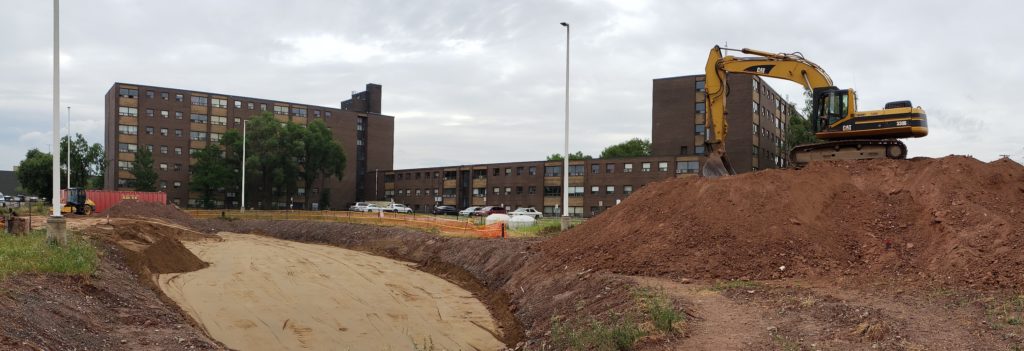
Traditional remedial excavation for petroleum hydrocarbons (PHCs) being backfilled
In many jurisdictions, regulations are changing to encourage legal on-site soil management. This is better for the environment, better for the property and the property owner (i.e., cost savings).
In Ontario, the Excess Soil regulation (Ontario Regulation 406/19 and accompanying Soil Rules) are gradually coming into force. It is presumed that more and more soil will be managed on-site. But how? The Ministry of the Environment, Conservation and Parks (MECP) states that for on-site use, potential Management Options for Excavated Soil include:
- Direct reuse of the excavated soil at the excavation site; and
- Treating or processing excavated soil and reusing the soil at the excavation site, in accordance with the terms and conditions of an Environmental Compliance Approval (ECA), where required.
Environmental Compliance Approval (ECA)
With much excitement, we announce that after years of submissions and negotiations with the Ontario MECP, Vertex has secured a flexible, mobile ex-situ soil treatment ECA!
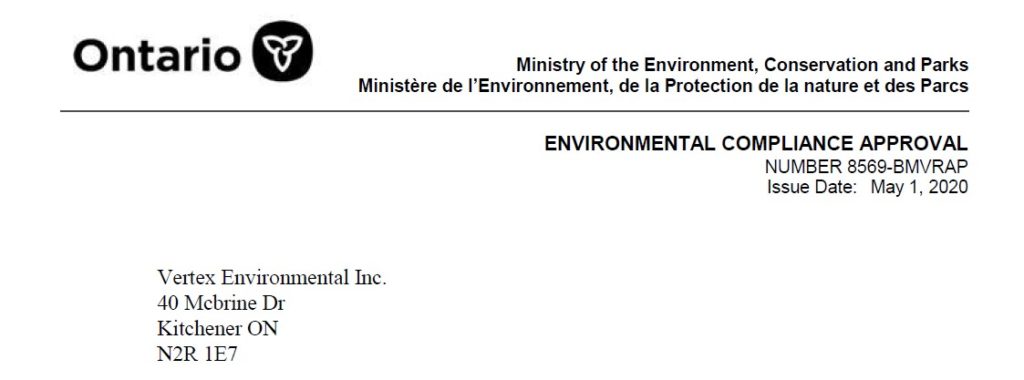
Vertex Environmental’s new flexible and mobile ex-situ soil treatment ECA
It allows soil treatment to commence on-site with just a 10 calendar day notification, needs no written concurrence from the MECP to commence, allows side-by-side properties to be combined into one for the purpose of soil treatment, permits hazardous soil treatment, and some of the best features are treatment without the use of tarps or covers over the soil piles, and the use of competent asphalt as the treatment area liner. More on this ECA below.
The purpose of this newsletter is to explore options for on-site soil treatment and to provide links to videos showing this work in action.
On-Site Soil Treatment Approaches
We remind readers that earlier this year we published an article on managing soil. You can review it here. A quick review of on-site soil treatment options include:
- In-situ soil mixing, where remedial amendments (treatment materials) are mixed with soil below ground surface using an excavator;
- In-situ zero-valent iron (ZVI) mixing with interesting attachments (e.g. the Lang Tool);
- In-situ soil mixing, at the ground surface using tilling techniques;
- Biopiling, where natural degradation of contaminants occurs in soil piles by adding nutrients, moisture, oxygen and possibly bacteria to the soil;
- Destruction of compounds in soil piles by the addition of more active compounds, such as chemical oxidants like hydrogen peroxide; and,
- Chemically binding or complexing leachate toxic soils containing heavy metals, such as lead or arsenic, in treatment cells to render the soils non-hazardous (for a huge net savings in off-site disposal costs!).
Videos of soil treatment processes are provided below after a more thorough review of Vertex’s new mobile ex-situ soil treatment ECA.
Permitting Issues and a Solution
Regulatory permitting requirements for soil or water treatment is often a pain point for projects and site owners. A site-specific permit takes many months to years, or is simply impossible to obtain, ultimately resulting in unreasonable job site delays or unnecessary additional costs. The solution is the use of mobile permits or ECAs. And yet ‘old’ mobile permits are often saddled with unreasonable conditions, including single property use, limited approved equipment, limited approved treatment compounds, and limits on distance to property boundaries.
Working in conjunction with the Ontario MECP, Vertex was issued a mobile ex-situ soil treatment permit with the following excellent benefits:
- Quick Start Times:
- 10 calendar day notice period.
- No written concurrence from the MECP required to start (unless they ask for additional information in writing that is).
- On-Site Flexibility:
- No mandated property boundary set-back for noise.
- Ability to treat many sites (assumption is they are side-by-side). This is amazing for urban brownfields with numerous legal properties. You can dig all soil from one project property and place it at one convenient location to treat.
- On-Site Efficiency:
- No water disposal required with recirculation of leachate within a treatment cell (biopile).
- No requirement for a cover or tarp on the soils (every other ECA we are aware of has written requirement for cover), however, odour and dust control is needed.
- Flexible requirements for liners (below the soil treatment area).
- Equipment Flexibility:
- Upfront soil processing using many different techniques and equipment, including screener, pugmill, Allu bucket, tractors.
- Soil washing.
- Treatment Material Choice:
- Large list of approved amendments – about 200 compounds!
- Chemical oxidation or other chemical treatments allowed.
- Ability to do Pilot-Scale projects with new compounds (if OK’ed by District office)
- Soil Treatment Types:
- Non-hazardous soil treatment.
- Hazardous soil treatment.
Soil Treatment Approaches, Links and Videos
Ex-Situ Soil Treatment
The Port Lands urban redevelopment site in Toronto is a huge project where soil management and ex-situ soil treatment is currently underway. Check out more details on the sustainable soil management approach being used at the Port Lands here.
Additional information on ex-situ treatment is also found on our website.
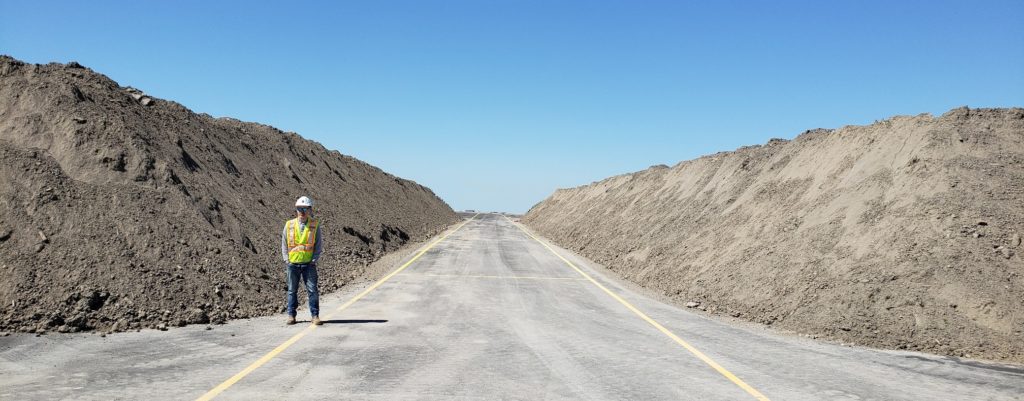
Example of uncovered windrow biopiles on asphalt pad for PHC treatment
In-Situ Soil Mixing
In-situ soil mixing is another efficient and inexpensive approach to addressing subsurface soil and groundwater contamination. It can be advantageous since the soil relocation, handling and infrastructure required for ex-situ treatment is minimized and may also be the more appropriate choice at properties where the contaminants are more readily treated without exposure to oxygen (such as chlorinated solvents). Here is a video showing some in-situ soil mixing in action:
Soil treatment at depth in flowing soils (usually very challenging!) can be addressed using specialized attachments on excavators, such as the Lang Tool.
In-situ soil mixing using the Lang Tool
Check out a video showing the Lang Tool in action here:
In-Situ Shallow Soil Tilling
Shallow soil tilling to remediate contaminants, such as pesticides and herbicides, in near surface soils can appear like remedial farming, since much of the same equipment is used. You might recall the humorous view of soil tilling that we previously produced in this video:
In-situ remediation of pesticides in near surface soils using tilling.
Still interested in more information on the beneficial reuse of soil as a resource? Check out these previous newsletters:
Wait, Don’t Throw That Out! The Beneficial Reuse of Soils Just May Be A Better Way To Go
Focus On Soil As A Resource Not A Waste
Closing
With environmental sustainability becoming a world focus, and with Environmental Regulators starting to view soil as a resource as opposed to a waste, the environmental industry needs improved ways to treat soils on-site. We hope that this article provides a few useful examples, from in-situ soil treatment to ex-situ soil treatment, and the awareness that Vertex Environmental has a mobile permit for Ontario that finally allows enough flexibility to sustainably treat soil ex-situ at Brownfield Redevelopments sites.
